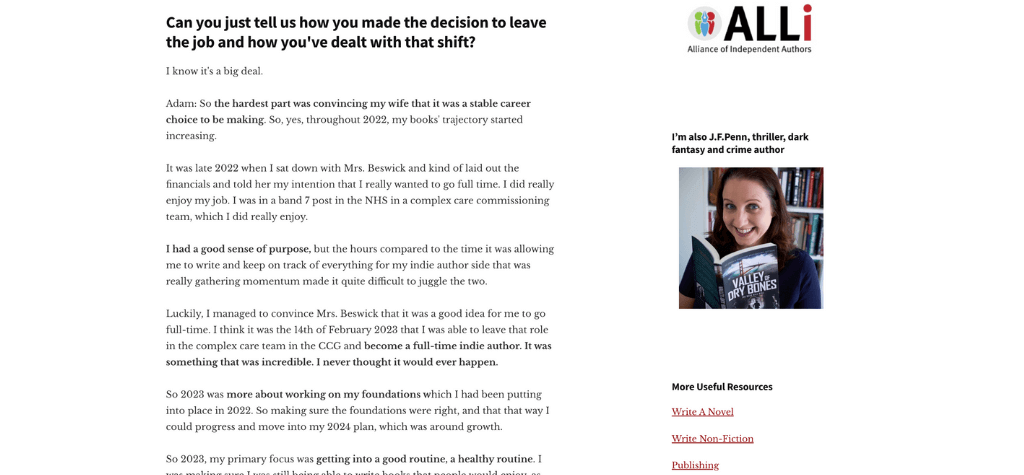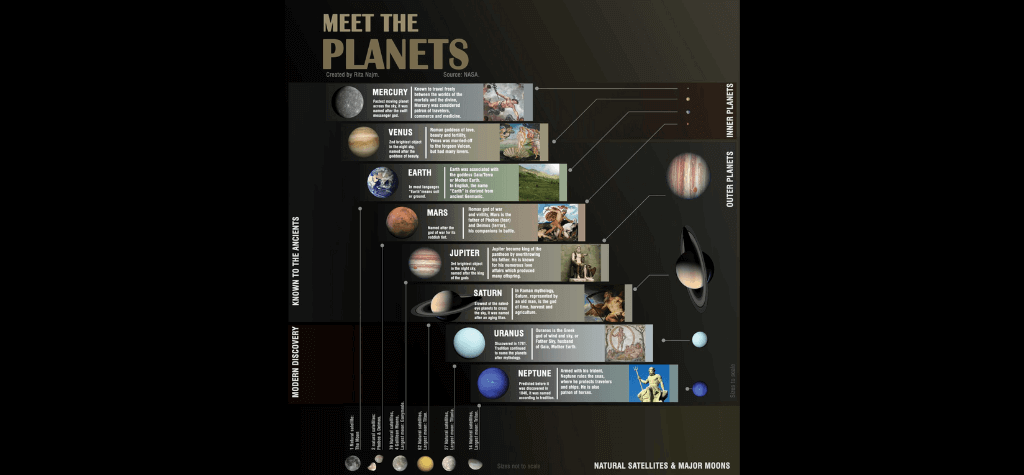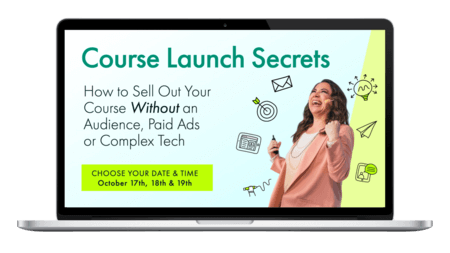Wondering what content marketing is and why it’s essential?
In this guide, we’ll break down everything you need to know about content marketing — from its definition and benefits to real-world examples and future trends.
Let’s dive in.
What is Content Marketing?
Content marketing is creating and sharing helpful content your audience wants to see. You can write blog posts, make videos, record podcasts or post on social media.
The goal is to provide answers and solutions to your audience’s problems. This helps you build trust and connections with potential buyers.
By consistently offering information with real value and insights, you can turn casual followers into loyal customers who trust your brand.
Why is Content Marketing Important?

Content marketing is a powerful tool. You build a strong connection with your audience while also achieving other important goals, such as:
- Building brand awareness
- Increasing traffic and engagement
- Generating leads and sales
- Improving customer retention
Builds Brand Awareness
By creating and sharing valuable content, you establish yourself as an authority in your industry. When your audience sees high-quality content from you, they’re more likely to remember and recognize your brand, so you stand out in a crowded market.
Increases Traffic and Engagement
Great content draws attention to your brand. Once you have that attention, your audience can engage with you on your website or social media. The better your content, the more time people will spend getting to know you and your business.
Generates Leads and Sales
When your content addresses your audience’s needs and pain points, it can turn visitors into leads and leads into customers. Sharing valuable information builds trust, making it easier for potential customers to choose your products or services over the competition.
Improves Customer Retention
Content marketing doesn’t stop once a sale is made. You keep your customers engaged and loyal when you offer ongoing support and valuable content. This can lead to repeat business.
What are the Different Types of Content Marketing?
Content marketing comes in many forms, each offering unique ways to engage and connect with your audience.
Whether it’s blog posts, videos, infographics or podcasts, these different types of content can be tailored to match your brand’s goals and your audience’s preferences.
Let’s dive into seven popular types of content marketing that can help you build a solid content marketing strategy.
1. Blog Posts

Blog posts are written articles published on a website. They provide information, insights, or updates on various topics. Blogging is a go-to content marketing method because it attracts and engages audiences.
Take Joanna Penn, a thriller and non-fiction author who uses blogging on her site, The Creative Penn. Many of her blog posts come from her weekly podcasts.

Instead of just publishing the transcripts, she formats them into easy-to-read articles, improving user experience (UX) and search engine optimization (SEO). She also creates original content that offers valuable advice for other authors.
Through her blog, Joanna shares her expertise and insights on writing, publishing, and marketing books. This helps other authors and draws people to the non-fiction side of her business. Blogging allows her to connect with her audience, build trust, and showcase her knowledge.
2. Videos

With video content marketing, you create and share videos that promote your brand, product, or service. It’s a powerful way to engage audiences, tell your story visually, and build your online presence.
YouTube is a favorite platform for video marketing because of its vast user base and excellent search capabilities.
The Spencer family of Althorp uses video marketing on their YouTube channel, Spencer1508.
They share their journey of maintaining the historic Althorp estate, sparking interest in the property, which is open to the public at certain times to help fund its upkeep.
The channel also highlights Charles Spencer’s work as an author, historian and public speaker.
The channel offers viewers a fascinating glimpse into Spencer ancestors’ heritage through behind-the-scenes looks at restoration projects and short videos about them. Through these engaging and informative videos, the Spencer family connects with their target audience
3. Infographics

Infographics are fantastic tools that turn complex information into eye-catching visuals. They mix graphics, icons and short text to highlight key points, making it easier for people to understand and remember the information.
Infographics are great for content marketing because they’re easy to share and often get a lot of engagement.

MyFitnessPal uses infographics to give its audience valuable information about nutrition, fitness and healthy living.
These infographics often include advice on healthy eating, workout routines and motivational stats to inspire users.
By sharing these infographics on its blog, social media and app, MyFitnessPal keeps its audience engaged and motivated.
This approach improves the user experience and builds loyalty. It also attracts new users by showing that the brand is dedicated to providing useful and practical health information.
4. Ebooks and Whitepapers

Ebooks are digital books packed with in-depth information on specific topics.
They’re a terrific content marketing tool because you can share detailed insights and strategies with your audience.
Ebooks also help establish your topical authority, and if you offer them as a lead magnet, you can use them to build your email list.

Bob Bly’s free ebook, The Business-to-Business Marketing Handbook, is a perfect example.
It attracts potential customers and captures their contact information through an opt-in. This allows Bob to stay in touch and offer his books and services.
Each email reinforces his authority. By consistently providing valuable content, Bob can nurture potential clients so that they know where to go when they’re in the market for a copywriter.
5. Social Media Content

Social media content includes posts, images, videos, stories and other forms of media shared on platforms like Facebook, Instagram, Twitter and LinkedIn.
It’s a crucial part of content marketing because it allows you to engage directly with your audience, build brand awareness and foster a community around your products or services.
Social media content is also easily shareable, increasing visibility and reach.

Makeup artist Andreea Ali uses her Instagram account to share makeup tips and tricks through video and static content. She showcases her makeup routines as well as the looks she creates for clients. It’s an effective approach because she can:
- Demonstrate her expertise and skills in makeup artistry.
- Engage her audience with practical, valuable content that they can use.
- Build a loyal following by consistently providing inspiring content.
- Showcase her work, attracting potential clients who might be interested in her services.
- Increase her brand’s reach through likes, shares and comments.
With social media content, Andreea Ali establishes herself in the makeup industry. She’s also building a community of engaged followers who trust her expertise.
6. Podcasts

Podcasting involves creating and distributing audio episodes on various topics, often in a series format.
It’s a powerful form of content marketing because storytelling and discussions help you connect with your audience.
Podcasts are also convenient for listeners, who can tune in while commuting, exercising or doing other activities.

One brand that does this well is the Acquired Podcast. The hosts explore the stories behind various companies—their history, strategies and successes.
For example, a recent episode focuses on Hermès, a renowned French luxury brand.
The episode highlights Hermès’ unique approach to business. They don’t increase supply to meet demand, avoid celebrity endorsements and operate without a marketing department. Yet they maintain a prestigious global reputation.
Listeners are hooked on these kinds of stories and eager to learn more. These kinds of podcasts attract a loyal following.
7. Case Studies

Case studies share the details of a project or campaign, showing how a business’s product or service helped a client achieve great results.
They’re effective because they provide real-world proof that your business delivers on its promises.
When you highlight successful outcomes, your case studies can convince prospects that you have the answers to their problems.

Take Salesloft’s case study on their work with Georgia Tech Athletics.
The study starts by explaining the problem of declining ticket sales.
Salesloft then describes their custom solution, which involved using their platform to improve Georgia Tech’s sales processes.
The case study concludes with impressive results—a significant increase in ticket sales.
This example shows how Salesloft’s services can address real issues and deliver measurable success.
By clearly presenting the problem, solution, and results, the case study builds credibility and helps potential clients understand the value Salesloft provides. It also establishes trust by showcasing a proven track record of success.
What are Examples of Content Marketing?
Content marketing comes in many shapes and sizes.
Here are three examples that showcase creative content marketing plans.
HouseFresh

HouseFresh is dedicated to improving indoor air quality through detailed, data-driven blog posts. They share comprehensive how-to guides, insightful articles and product recommendations.
What sets HouseFresh apart is its commitment to unbiased testing.
They purchase all the air purifiers and air quality products they review with their own money, ensuring independence from manufacturers.
Rigorous experiments in a controlled home environment provide accurate performance data so consumers can avoid misleading products.
By offering honest reviews and practical advice, HouseFresh builds trust and credibility with its audience, and readers rely on its recommendations.
This trust is crucial since HouseFresh earns affiliate commissions from readers who purchase recommended products through their site.
NASA

NASA’s Jet Propulsion Laboratory (JPL) uses infographics in its content marketing efforts.
These infographics simplify complex scientific concepts, presenting them in a visually appealing and easy-to-understand format.
For example, their “Meet the Planets” infographic provides easy-to-understand information about the unique characteristics of different planets in our solar system.
The goal is to make scientific information accessible and engaging.
JPL’s infographics educate the public and, hopefully, spark a deeper interest in space exploration.
It improves public understanding and appreciation of NASA’s work while strengthening JPL’s reputation as a leader in space science.
The Holderness Family

The Holderness Family uses diverse content marketing types to engage their audience and build a robust online presence.
Known for their humorous and relatable video content, they create parody songs, skits and family-centered videos that resonate with viewers.
The Holderness Family also produces podcasts where they discuss various family life topics, offering deeper insights and personal stories.
They also maintain an active presence on Instagram and Facebook, sharing behind-the-scenes glimpses, interacting with their audience and promoting their content.
While not every brand can manage such a varied content strategy, diversifying your content marketing efforts can be very effective.
The variety helps the Holderness Family maximize their reach and build a strong presence across multiple channels.
What are the Future Trends in Content Marketing?

Content marketing is continuously evolving. Staying ahead of the curve will help you maintain a competitive edge.
Here are some of the future trends in content marketing.
AI
Artificial intelligence (AI) is revolutionizing content marketing by automating tasks, analyzing data and even creating content. AI tools can help personalize content, optimize for SEO and predict trends, allowing marketers to create more targeted and effective campaigns.
The Rise of Interactive Content
Interactive content, such as quizzes, polls and infographics, is becoming increasingly popular. It engages users more deeply than traditional static content, so they spend more time with your brand. You can also get valuable insights into their preferences and behaviors.
The Growing Importance of Video
Video content continues to dominate the digital landscape, with platforms like YouTube, TikTok and Instagram leading the way. High-quality video content can capture attention quickly, convey messages effectively and engage audiences in a way that text and images alone cannot.
Voice Search Optimization
With the rise of smart speakers and voice assistants like Alexa and Siri, optimizing content for voice search is becoming essential. Voice search queries are more conversational and longer than text queries, so focusing on natural language and question-based keywords helps improve your visibility in voice search results.
What Are Your Content Marketing Insights?
Do you have a favorite content marketing example? What do you think the future has in store for content marketing?
I’d love to hear your thoughts, so share them in a comment below.
Before you go…
Get Instant Access to my FREE Dopamine Button Guide!
Inside, you’ll discover 3 little-known brain hacks that skyrocket your course engagement & sales…
Here’s the thing: the “old way” of designing and launching courses just isn’t cutting it anymore.
If you want to attract students who buy and keep buying (not to mention send referrals your way!)…
You need to do things differently.
Enter the Dopamine Button — the super-secret button in your students’ brains that you can leverage to create incredible results for them AND repeat sales for you.



























Leave a Comment